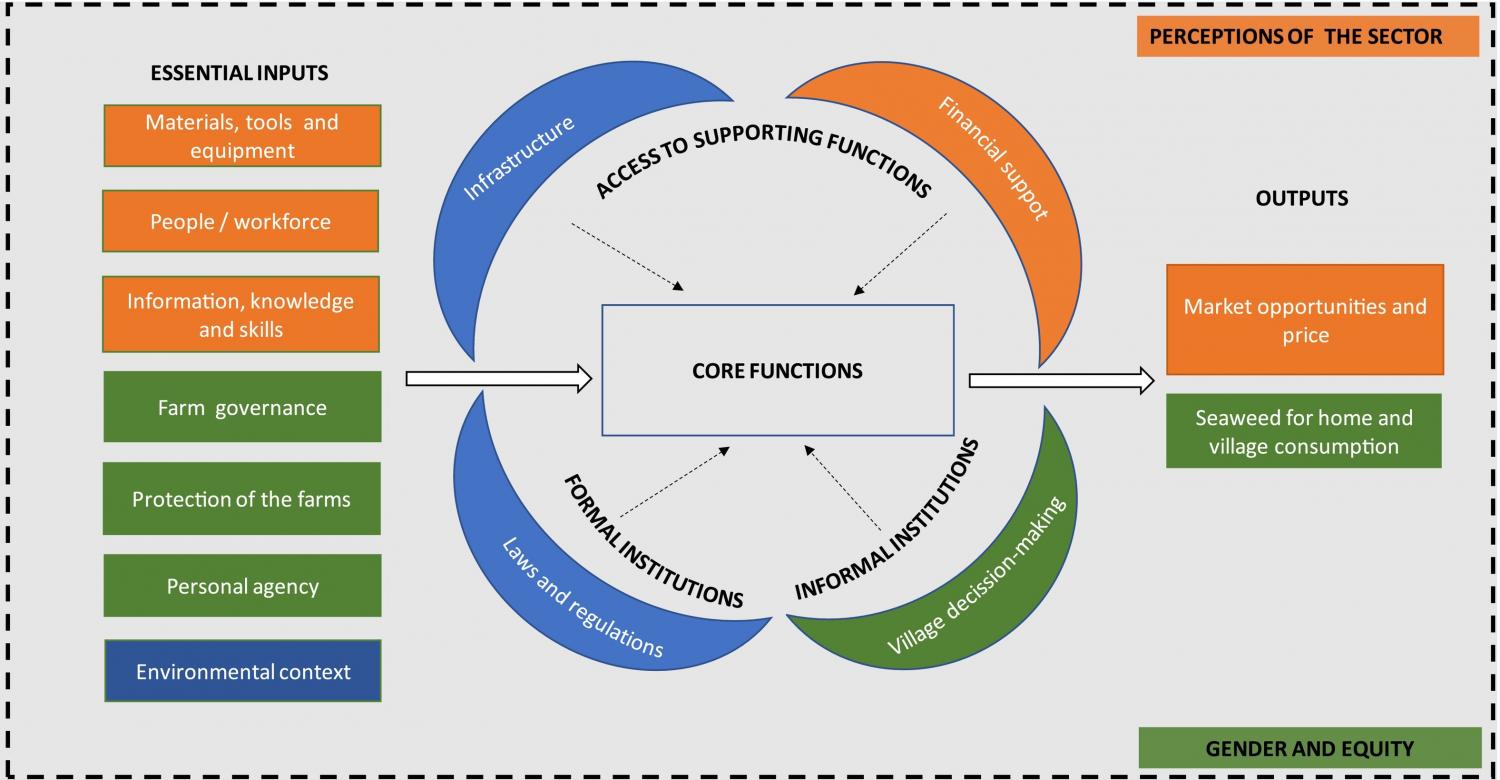
Adoption of any new agriculture or aquaculture technology by intended beneficiary farmers is not a simple process. Typically, new technologies and new activities have been delivered to farmers through a ‘technology-push’, designed and supported by governments, non-government organisations and donor community, yet rates of adoption are disappointingly low. In this paper we set out to explore barriers and enablers for engagement in a new aquaculture activity, as perceived by the intended farmers. Our example is of ‘technology-push’ towards seaweed farming in coastal villages in Samoa. To increase the likelihood of greater adoption in the future, we explored perceptions of the intended beneficiaries by conducting 20 focus group discussions with 135 women and men, in 10 villages. Specifically, we explored their perceptions of seaweed as an industry, as well as perceptions of barriers and enablers linked to the key market system components: core production functions (inputs and outputs); supporting functions (such as transport, finance, training); institutional barriers; and personal agency. We found that a set of inputs seen as ‘essential’ was much broader than inputs suggested in market systems studies. Essential inputs included not only materials, tools, equipment and labour, but also extended to include information, knowledge and skills; farm governance and protection of the farms; personal agency; and environmental context. What emerged from our data is a clear division of what participants saw as solutions that can be resolved by them (such as arranging informal institutions) versus solutions that need to be provided externally (such as tools, skills, financing and markets) for which the Ministry of Agriculture and Fisheries was seen as the key external provider. We suggest that, when introducing new activities or technologies, adequate time and effort needs to be put into (a) finding out what essential inputs for the potential beneficiaries of the activity are; and (b) providing them with such inputs in pre-planned manner.
